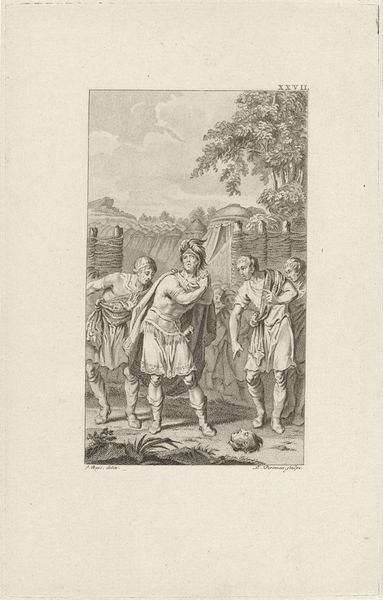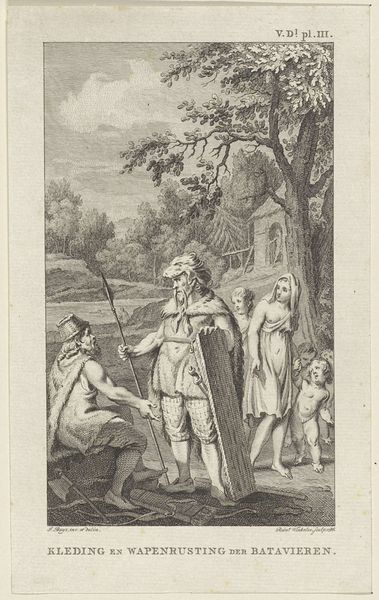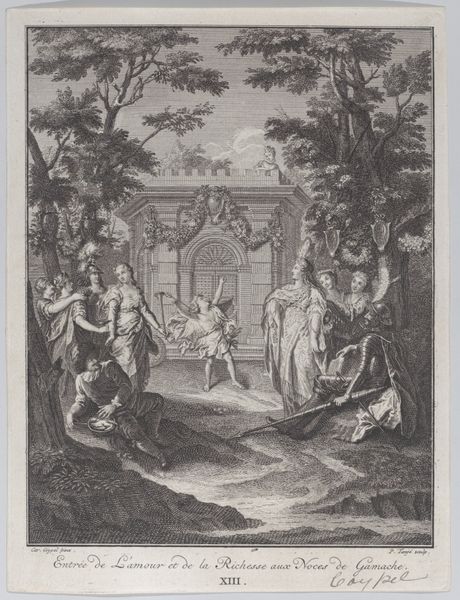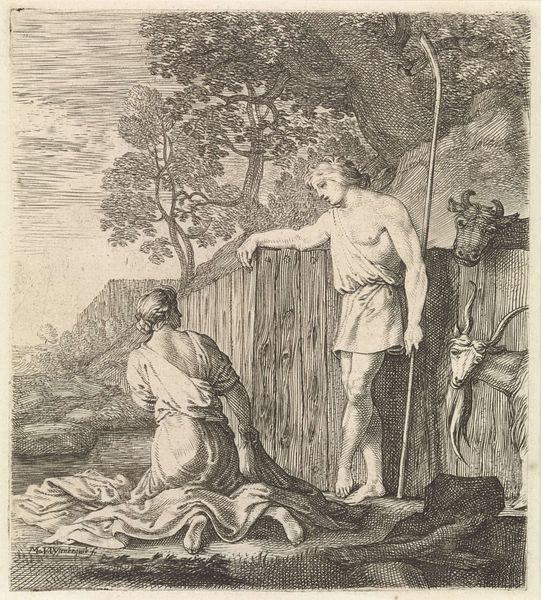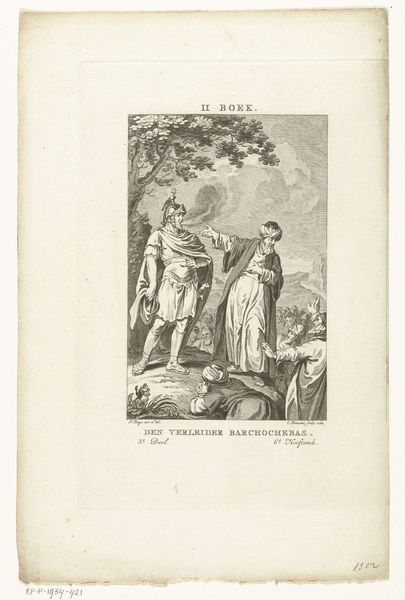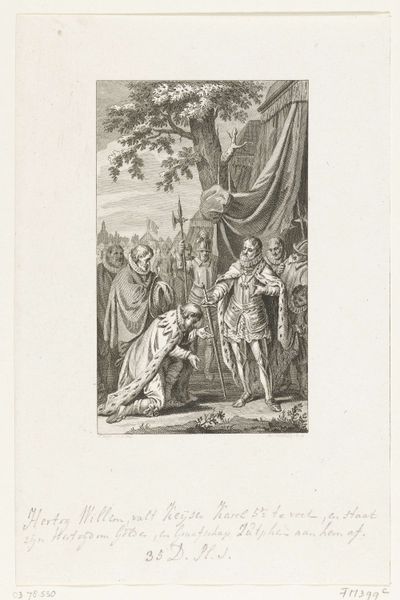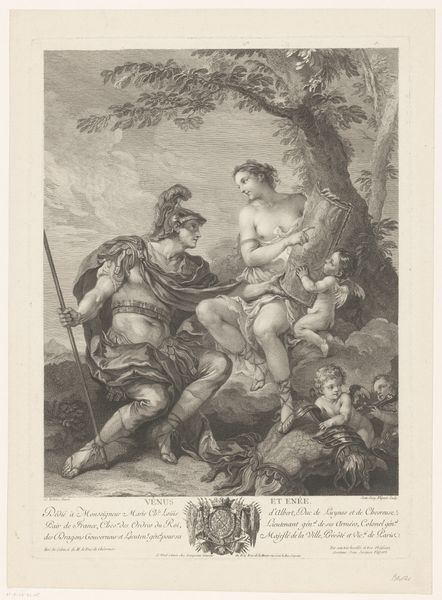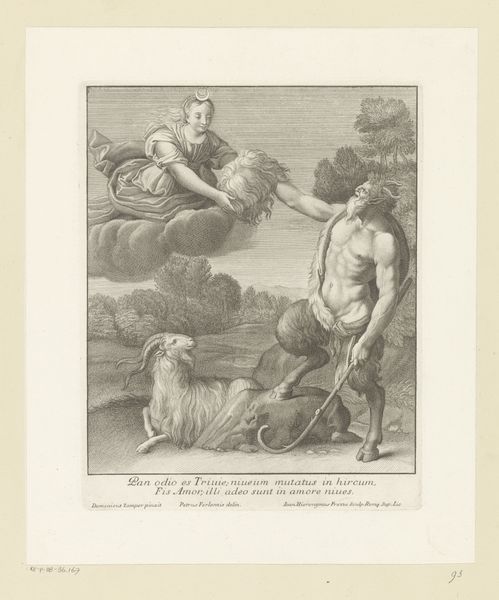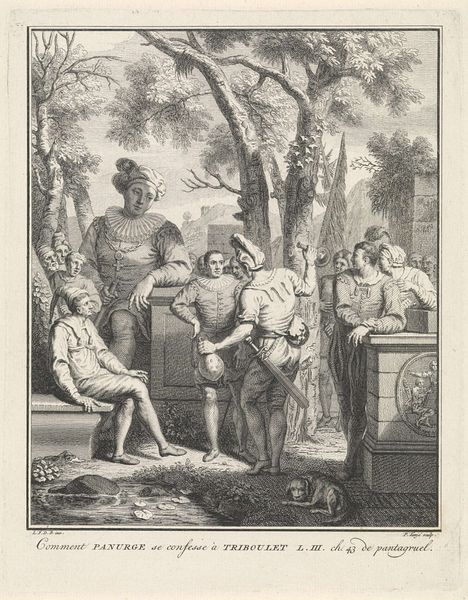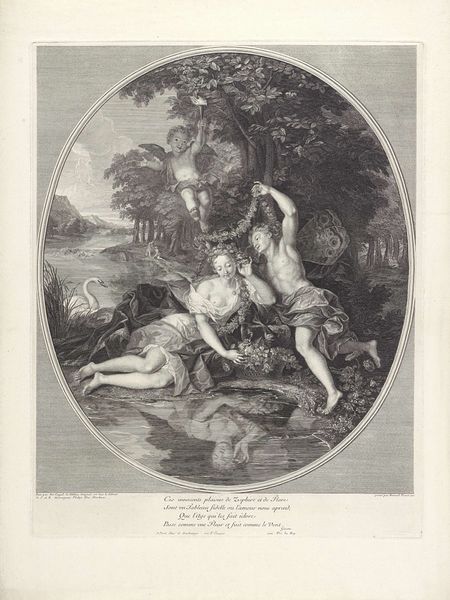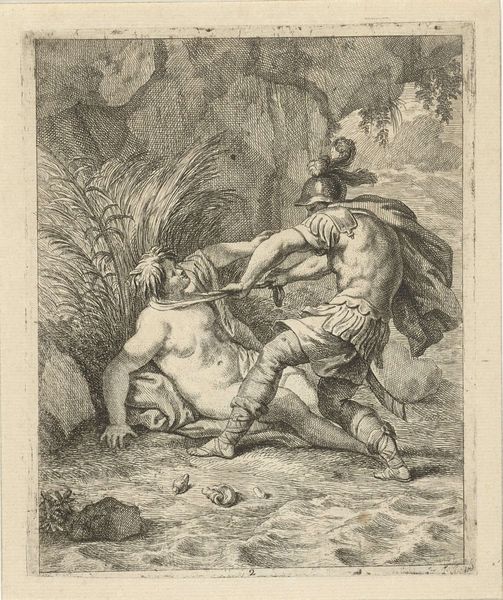
print, etching, engraving
#
aged paper
#
toned paper
#
baroque
#
ink paper printed
# print
#
etching
#
old engraving style
#
landscape
#
figuration
#
framed image
#
history-painting
#
engraving
Dimensions: height 370 mm, width 238 mm
Copyright: Rijks Museum: Open Domain
Curator: At first glance, it’s stark, but there’s a quiet intensity. It’s like a whisper in monochrome, you know? Makes you lean in to hear its secrets. Editor: This is "Christus verschijnt aan Maria Magdalena," or "Christ Appearing to Mary Magdalene," an etching dating from about 1720-1728, now residing here at the Rijksmuseum. It's attributed to Willem de Broen. What strikes me is how de Broen captures a historical interpretation, the staging of this pivotal biblical encounter. Curator: Staging is right. I mean, look at the garden setting! Feels almost like a theater backdrop. Gives it this slightly surreal, dreamlike quality. Makes me wonder about Mary’s emotional state—absolute vulnerability and astonishment. Editor: Absolutely. The use of landscape to enhance narrative was common. Note the careful positioning, drawing parallels with power dynamics and the architecture’s influence on perceived sanctity. And of course, let’s remember that prints like these were often disseminated widely, carrying socio-religious messages across geographic boundaries. Curator: It's interesting that he isn't wielding authority in this moment, but it seems very intimate, like a private reveal amidst the public face of it all. This raw humanity in what's fundamentally a story of faith – that's what grabs me. And this aged paper! Feels like holding history. Editor: Its condition does reflect the passage of time and modes of display and collecting; aspects which subtly shift our perspective when understanding art’s public life. Beyond its beauty, consider it as a artifact carrying stories of faith and society's gaze. Curator: Exactly, because while the paper and ink are still here telling the tale, the artwork goes way beyond its appearance; it almost comes to life through its journey. It is as if, in gazing, it gazed back. Editor: Yes. In that way, we can truly observe that we too now add to the narrative, giving it breath and allowing that initial aim—communicating belief—to live on.
Comments
No comments
Be the first to comment and join the conversation on the ultimate creative platform.

